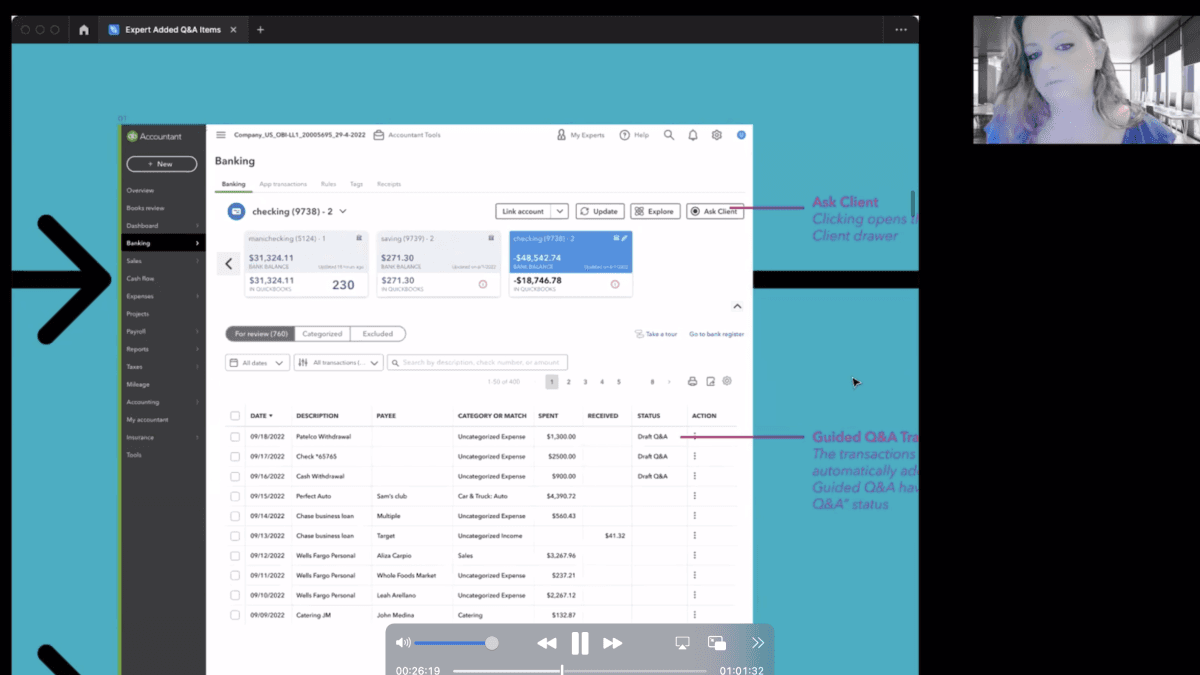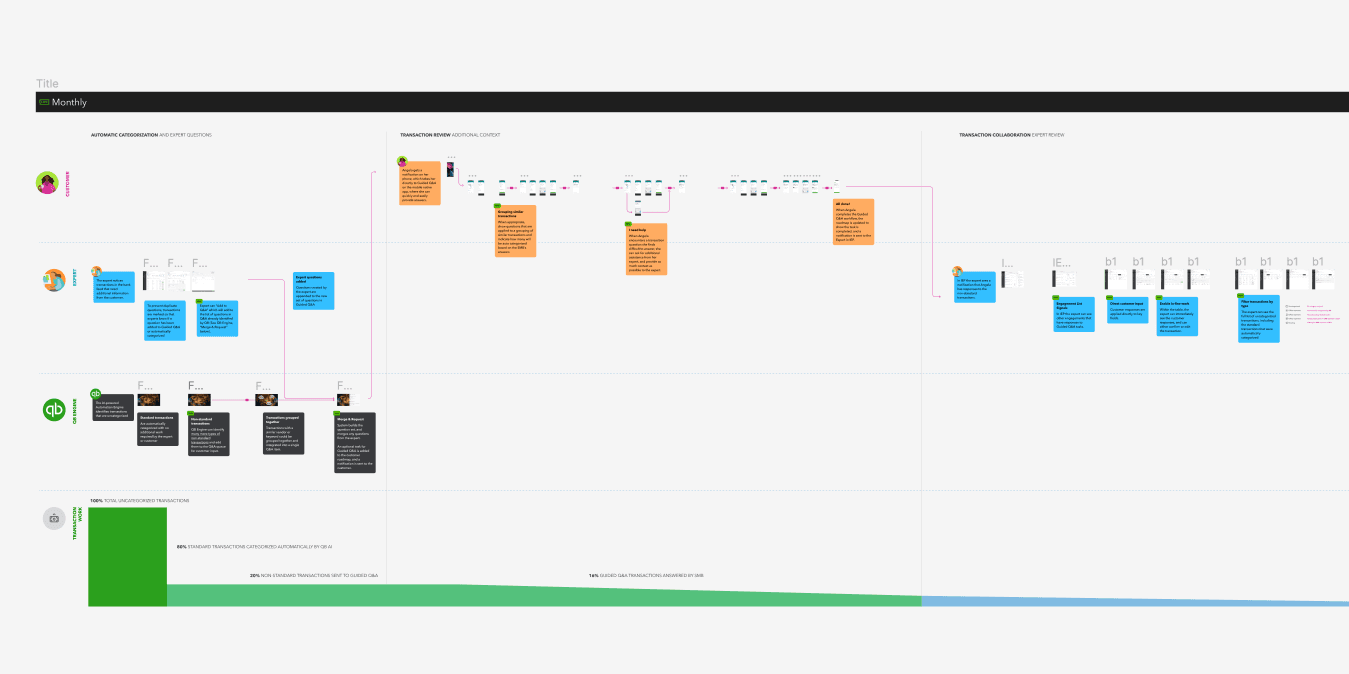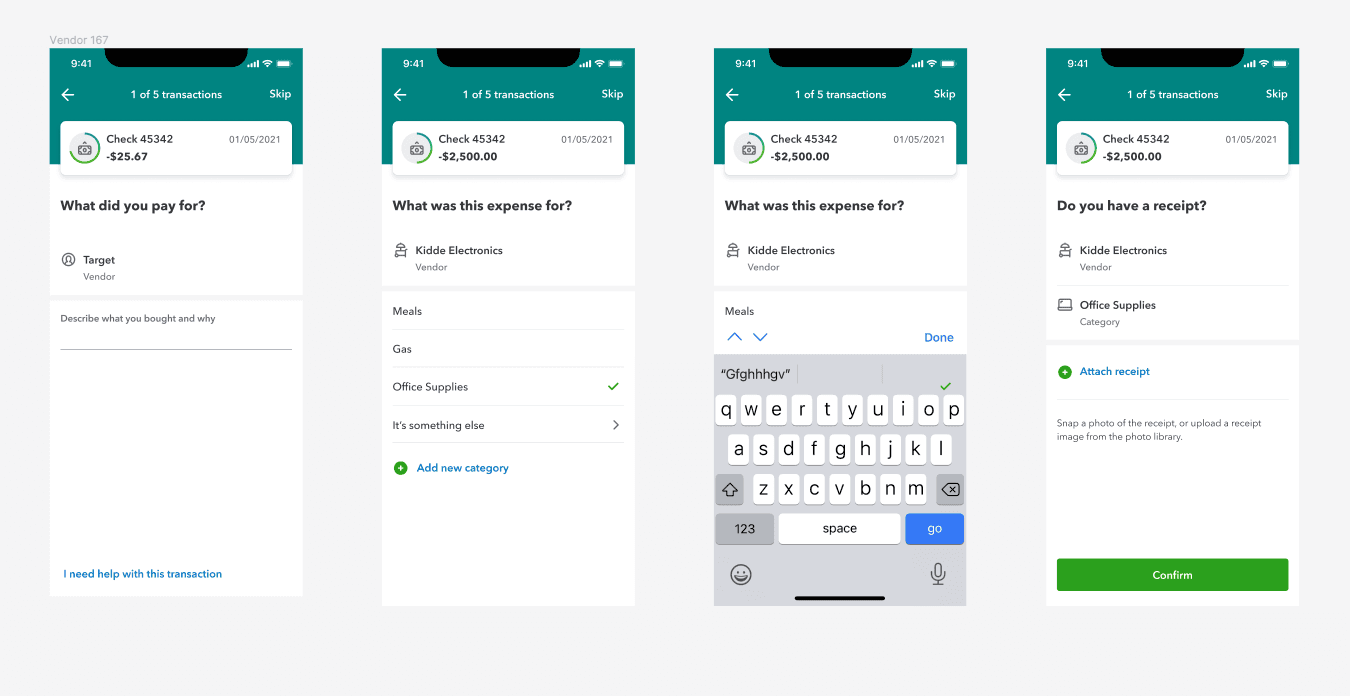Intuit • QuiCKBOOKS LIVE + AI
Reducing transaction management work by 35%, bringing benefit to customers faster
For each customer subscribed to the QuickBooks Live service, bookkeepers spend a lot of time collecting and acting on transaction information. This manual, tedious process requires work from both the bookkeeper and the customer, reducing speed to benefit and leaving the customer feeling like they are doing more work than the service promises to reduce. I led an effort to leverage Intuit’s large models of financial data to automate the transaction management process.
Interviews with QuickBooks keepers helped me to build a detailed step-by-step process of transaction management. This would help me understand the friction points and reveal tasks that could be replaced with automation.
The steps identified in discovery were then organized into a rough journey map in a FIgJam
Creating a new process infused with AI to reduce human work
After identifying all of the steps bookkeepers take to manage transactions, I explored where in the journey AI would automate and replace the tasks bookkeepers would normally take. I then had a rough journey map that would highlight the gaps where new user flows and interfaces would need to be created.
Wireframes and low-fidelity mockups visualized how the AI would automatically collect missing information about transactions it could not easily categorize.
A vision of a new transaction management process powered by Intuit’s AI models
After additional iterations, I created a highly detailed Journey map of the proposed transaction management process. This map was helpful in executive presentations as it was easy understand where the AI automated the work, where human intervention was needed, and how bookkeepers would be invaluable in completing the last-mile work.
The Journey Map of the end-to-end process of transaction management shows how Intuit’s AI model does the management work upfront, reducing the amount of manual work for both the QuickBooks Bookkeeper and the Customer.
Designing for human intervention and cleanup
After additional usability tests, I clarified my designs to show how customers would easily provide their information, and how bookkeepers would resolve the last remaining transactions through collaboration tools like task requests and chat.
Based on my previous work on Live Collaboration, it was important to have a mobile experience to enable customer to reply to questions as fast as possible.
Conclusion
An MVP for AI powered transaction management was launched in early 2023 to test the ability of the AI model to categorize against a small set of use cases. As the model adapts to more transaction types, it will be able to handle up to 80% of all transactions for each QuickBooks Live customer. This automation would reduce bookkeeper time collection and acting on transaction information from 11 hours per month for each customer engagement to 4 hours.






